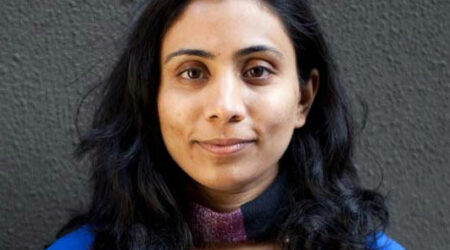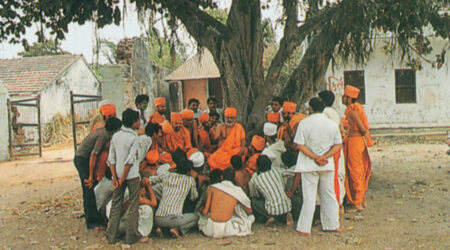True education must begin with the conditioning during childhood that unlocks the experience of Truth and the limitless power of the human mind. In the west, pioneers developed basic principles witnessing the minds of children during their development. It is no accident that mothers were major contributors. Roman Maria Montessori developed schooling that emphasizes tactile learning, mental freedom to discover, and non-competition.
Other school approaches also resisted the Oxbridge classroom of rigid desks and a teacher at the blackboard that accentuated data and information as the basis for intelligence. In Reggio Emilia, Italy, parents and the wider community take collective responsibility of teaching children using a village-style inclusive approach to engage young children with their particular interests. Curriculum topics are derived from talking with children and their families and using their mental constructs to create projects for learning comparison, negotiation, and interpersonal multilogue and dialogue. The teacher learns alongside the child, using an art teacher and a classroom that looks like a home.
Sudbury schools developed with individuality and democracy in mind, giving students complete control over what and how they learn and how they are evaluated. Students and staff have equal votes and assume students are capable of taking a certain level of responsibility and of making sound decisions, and equally strong to deal with the consequences and learn from poor decisions. Students are not divided into different classes by age and use active mentoring of older over younger students.
Rudolf Steiner used the tenets of anthroposophy, embracing the body, soul and spirit, and promoting creative expression, and social and spiritual values. His work was propagated using the Waldorf method of arts, creativity and imagination, but with boundaries for what can and cannot be learned during the three phases of young development. The Edward Harkness oval table prioritizes lack of hierarchy and learning around discussion, focusing on self-learning, self-expression and a strong ability to delve deep into subjects of interest using sharing and storytelling.
All western theories developed in the past century, using five main educational learning theories and philosophies of child development specialists, and working with parents who want their child to learn a particular set of values.
Behaviorism perceives that positive and negative reinforcement through external factors in the environment creates behavioral conditioning of the landscape of the mind. Stimuli from the environment etch automatic pathways into the brain and behavior. Cognitivism stresses mental pathways of understanding, using physical response to experience and developing knowledge through reading texts and receiving lectures that demonstrate truth; these set up the mind’s ability to capture information and see the mind as an information-processing device, lending its psychology to artificial intelligence models. Constructivism understands that linking new information to previous experiences allows people to create their own understanding of the world through actively molding their knowledge to their environment. It makes them responsible for constructing their own meaning of the world.
Humanism, social learning theory, connectivism and experiential learning invokes the student to learn using the natural processes of their formative world. Through social context, observation and experiencing scenarios and role modeling to learn, they form the connections they need to process information.
Like most -isms, all western models are replete with opportunities for the bias that teaches what the System wants. The heart and the vast land of emotions as a window into interoception and connection to consciousness are not weighted.
Western systems of learning do not encourage the student to seek the unparalleled Universe of the inner mind, or to use the senses to discover the boundaries between the inner and outer world in unfolding time and space, light and sound, and matter and energy with potential for awareness and conscious creation of void formations.
While parents know they must protect an infant from random wandering or focused curiosity on dangerous objects such as fire, metal, or gravity, western educational theories do not stress the importance of corralling the mind and creating a safe landscape with the vast richness of nature but with the wisdom of knowing human experience in the context of a larger framework of reality.
Current education in the west also does not protect from the consequences of experience and knowledge acquisition among abusive or ignorant guides. If a young mind is littered with information that overwhelms the senses or ability to process, there is no real accountability for the teacher or mechanism for healing the student and soothing that overwhelm that erases curiosity.
Vedic schooling is discarded by calling it religion, rather than embracing it as a world-view that seamlessly moves between botany and physics, metallurgy and optics, music and chemistry. Using neoclassical physics to simply expand the landscape of the mind beyond the usual four dimensions of x, y, z, and time, wise Vedic teachers open the Universe to young minds, using 64 arts, 14 sciences, and infinite patterns of nature in the forests and fields, linking the experience of sound through mantra and music, to etch avenues into the brain.

Dr. Bhaswati Bhattacharya
The South Asian Times columnist Dr. Bhaswati Bhattacharya is a Fulbright Specialist 2018‐2022 in Public Health and Clinical Asst Professor of Medicine, Weill Cornell Medical College in New York. She prefers to walk on earthen roads not concrete. Her bestselling book Everyday Ayurveda is published by Penguin Random House. www.drbhaswati.com












